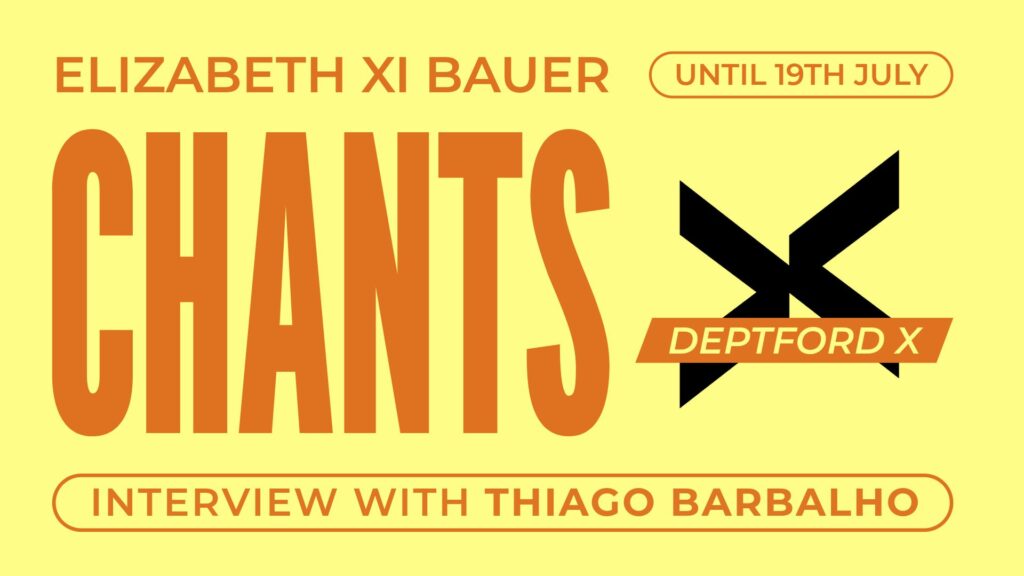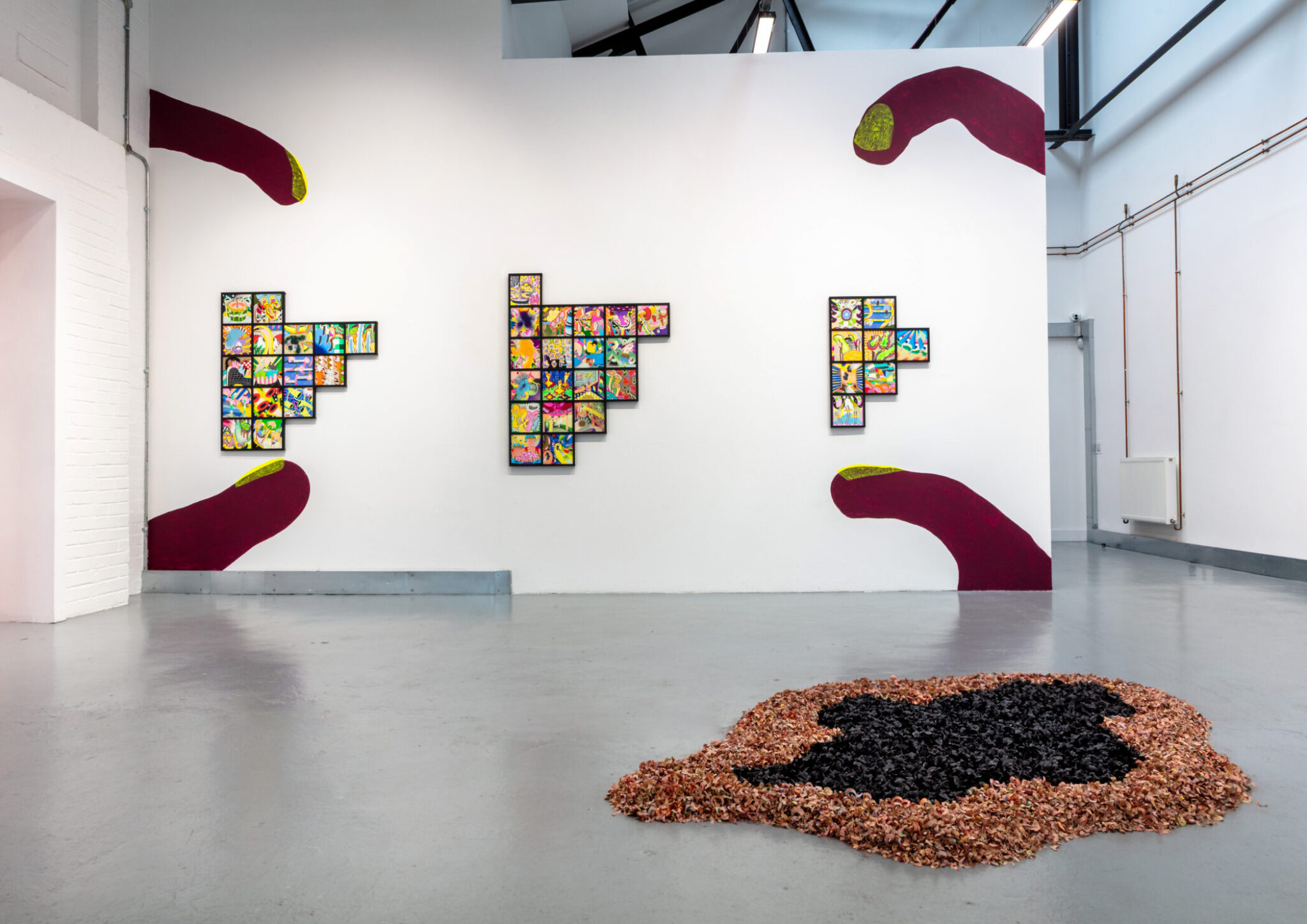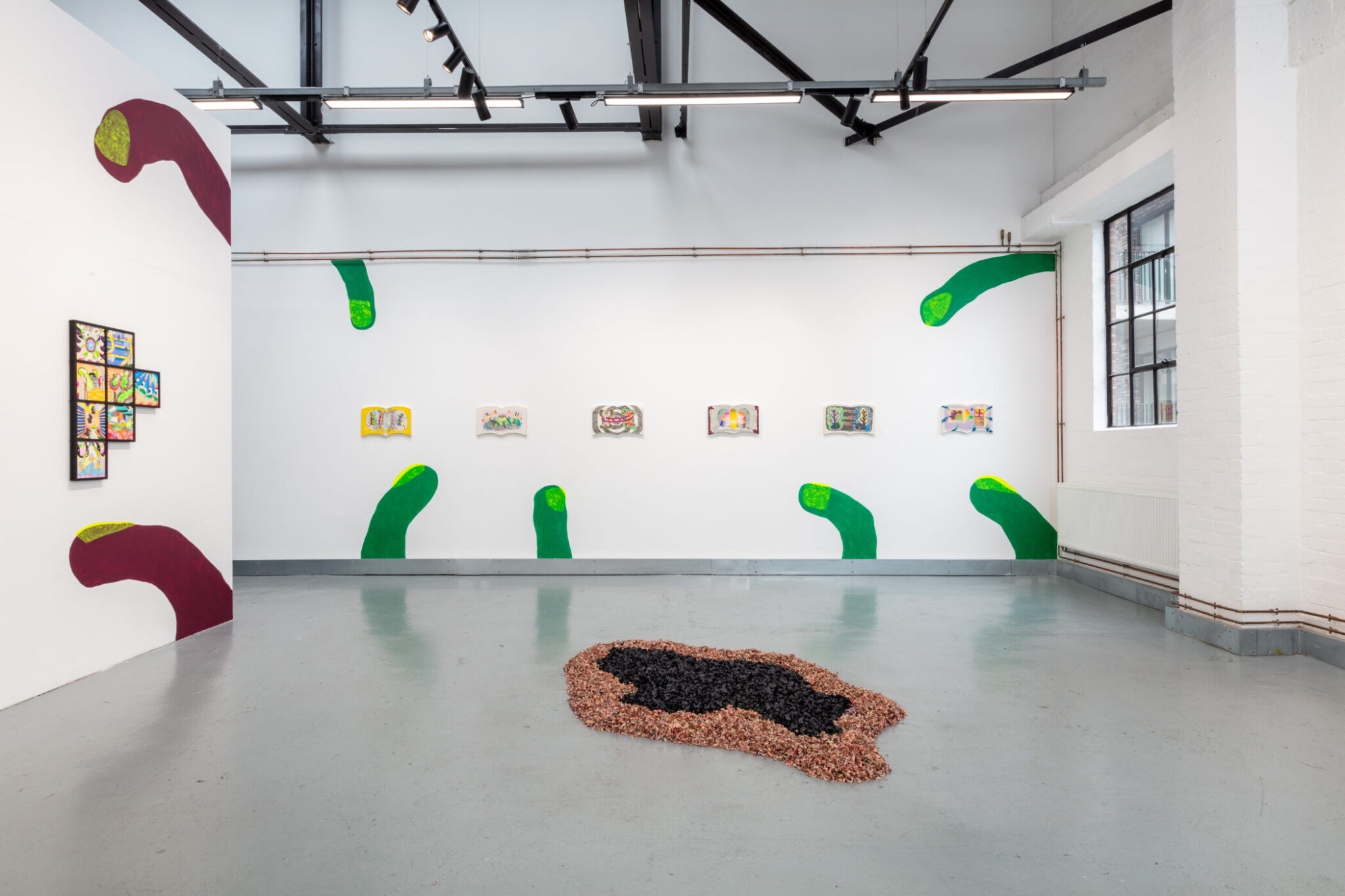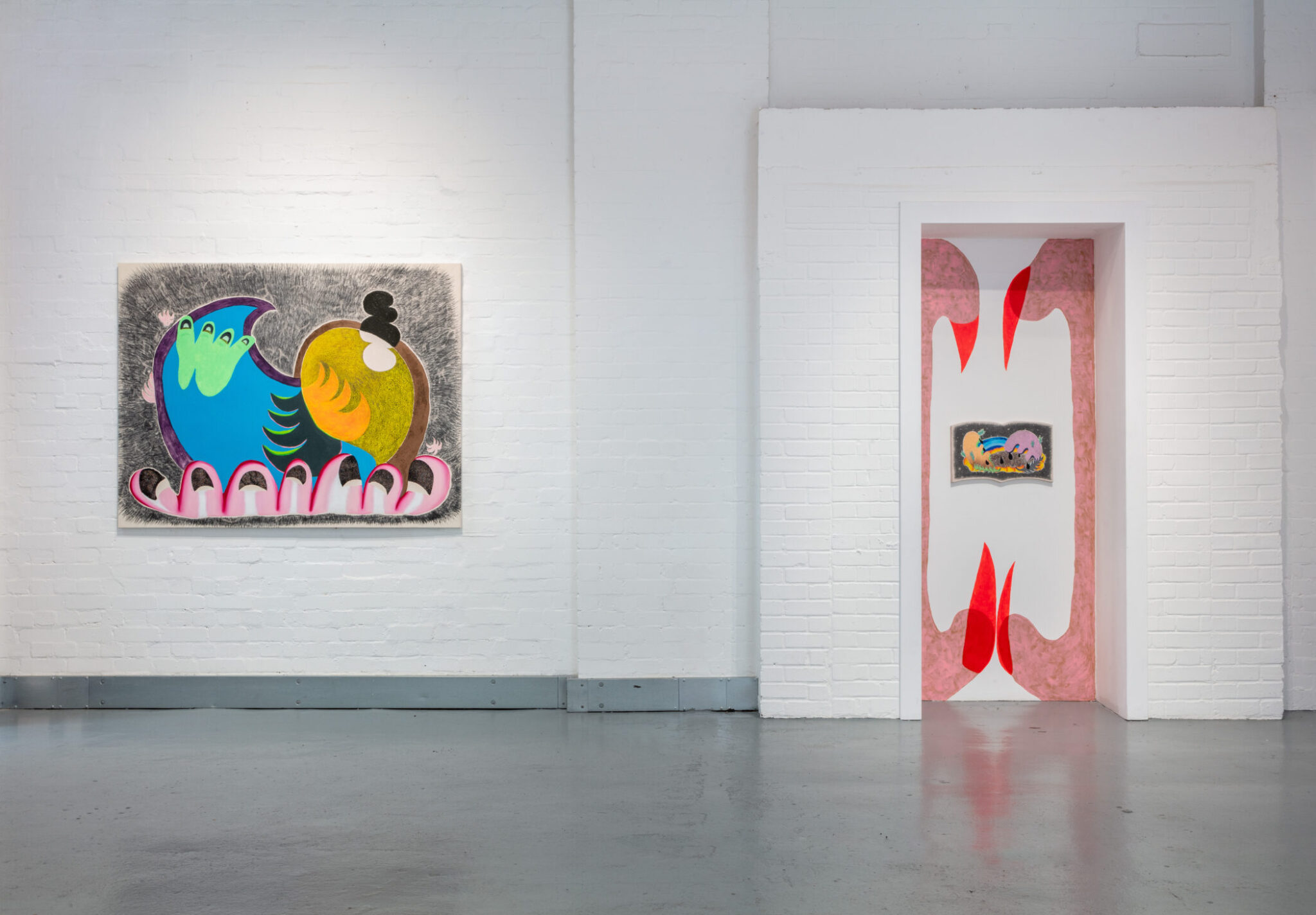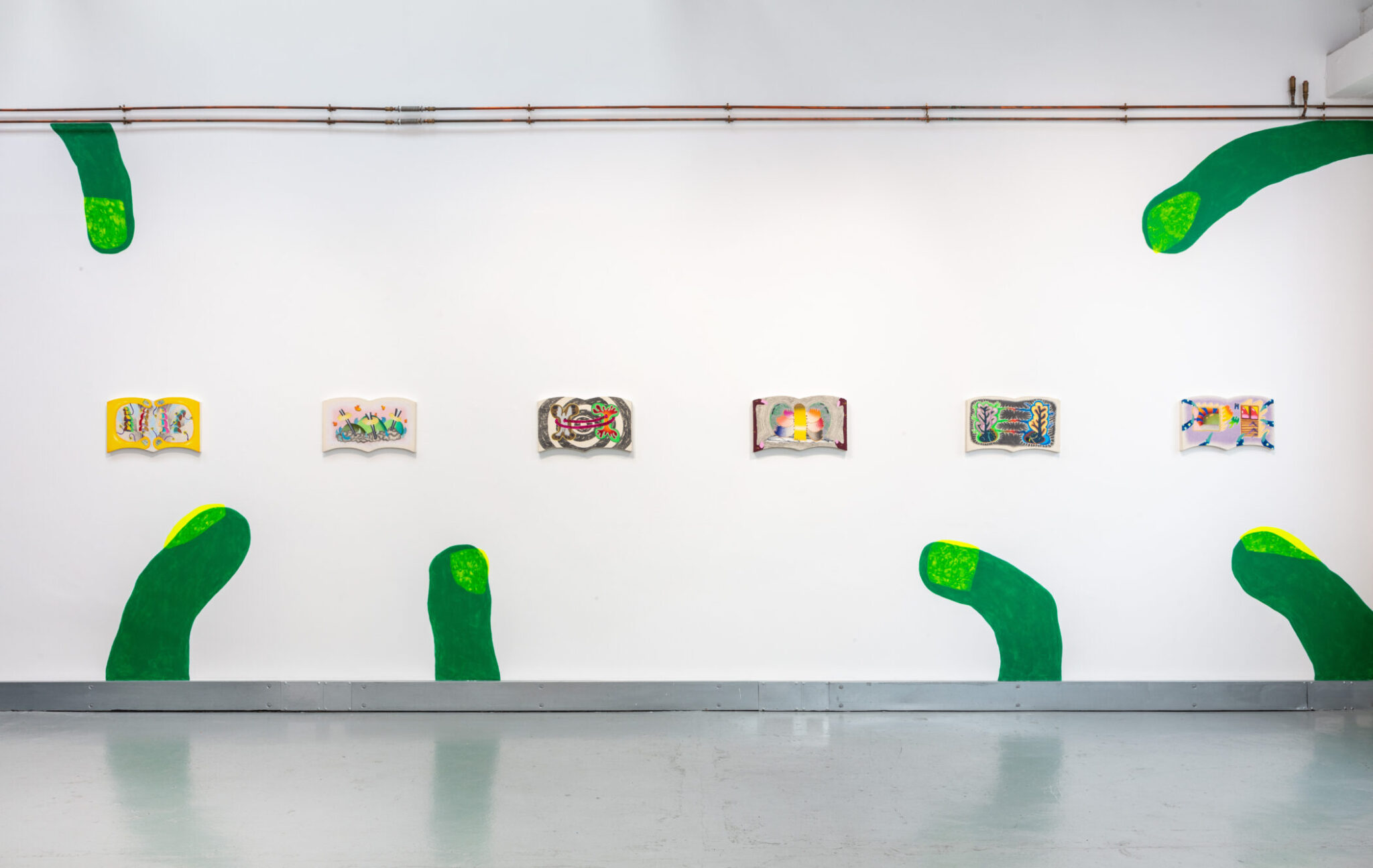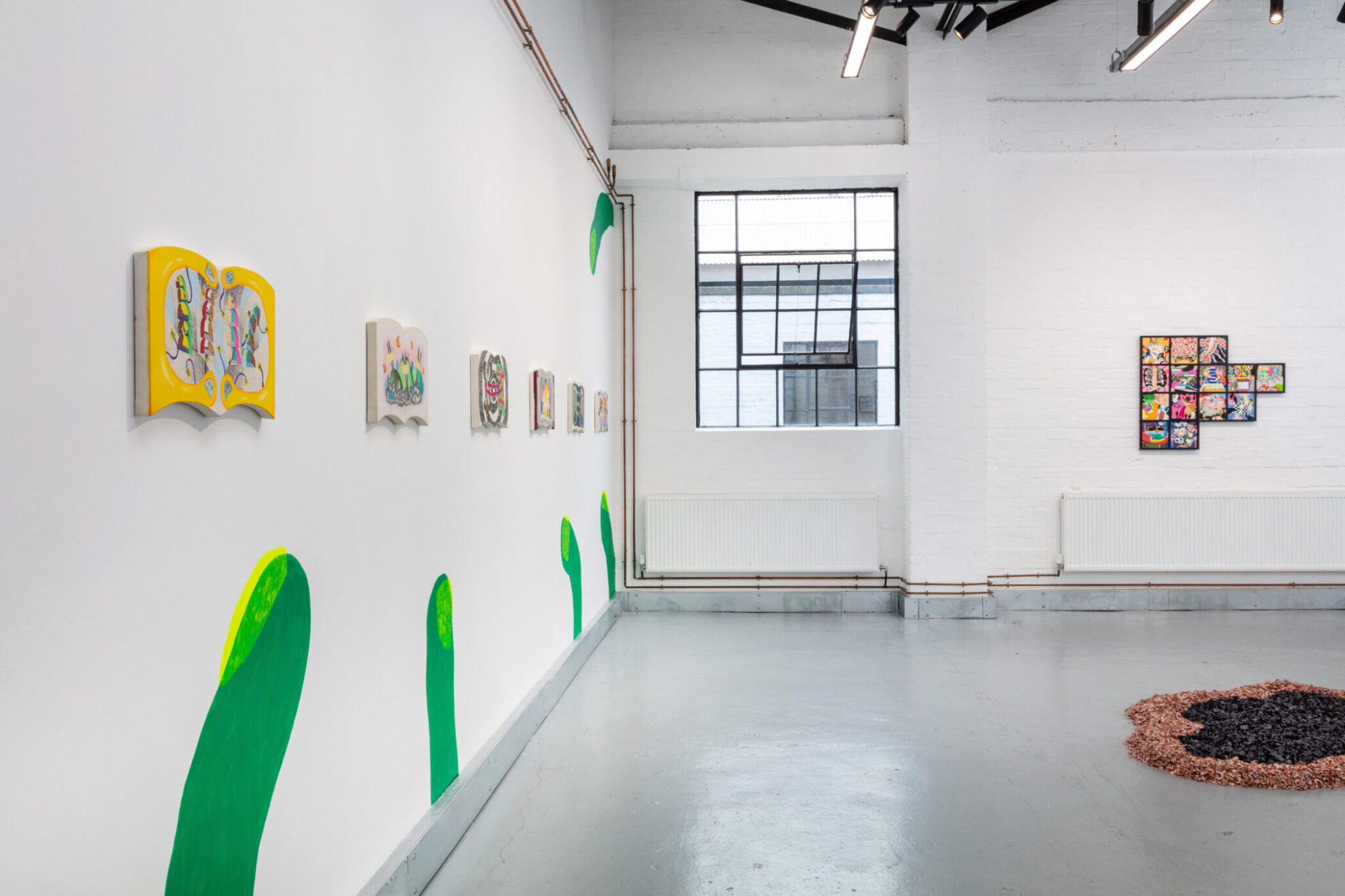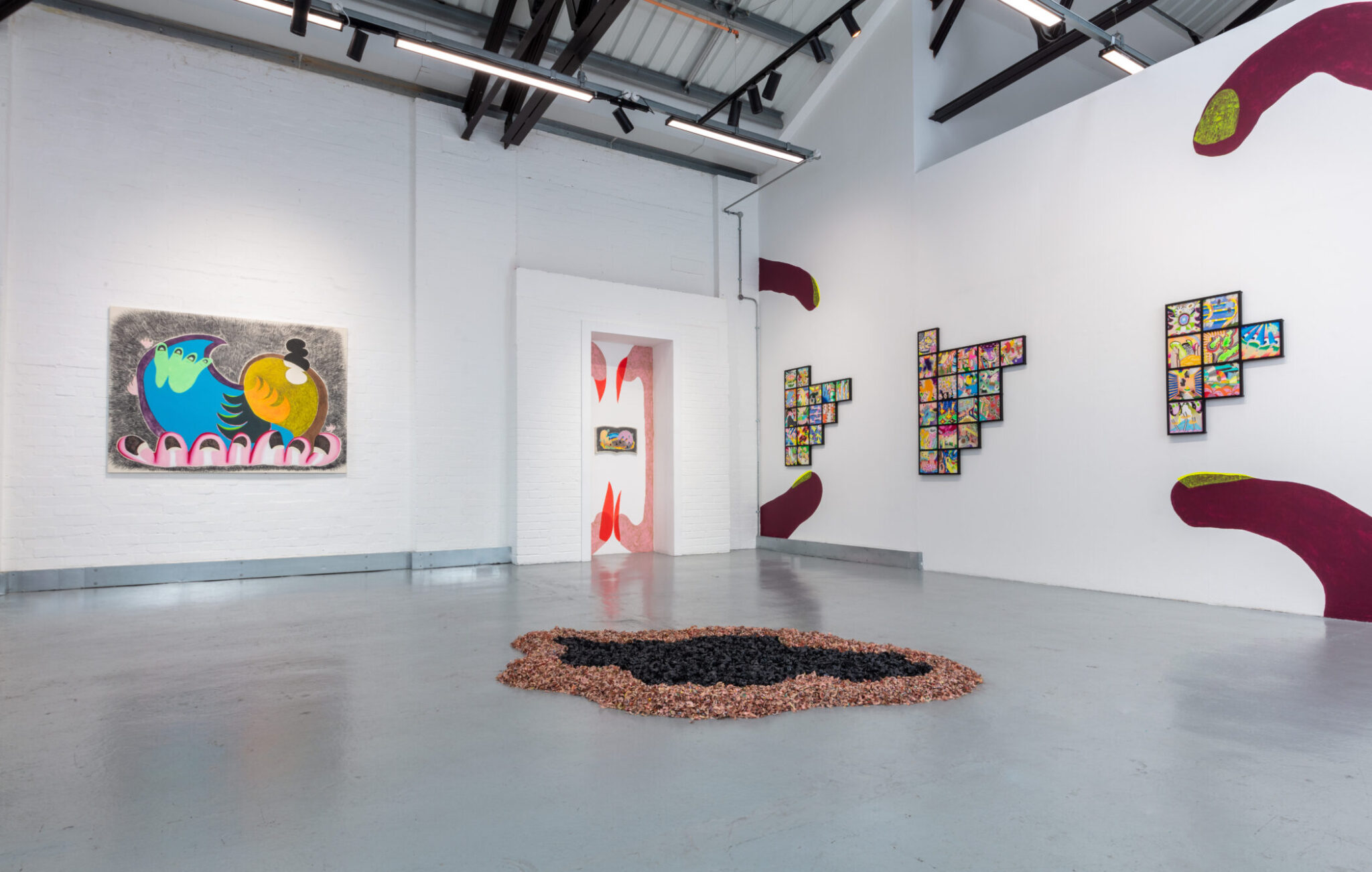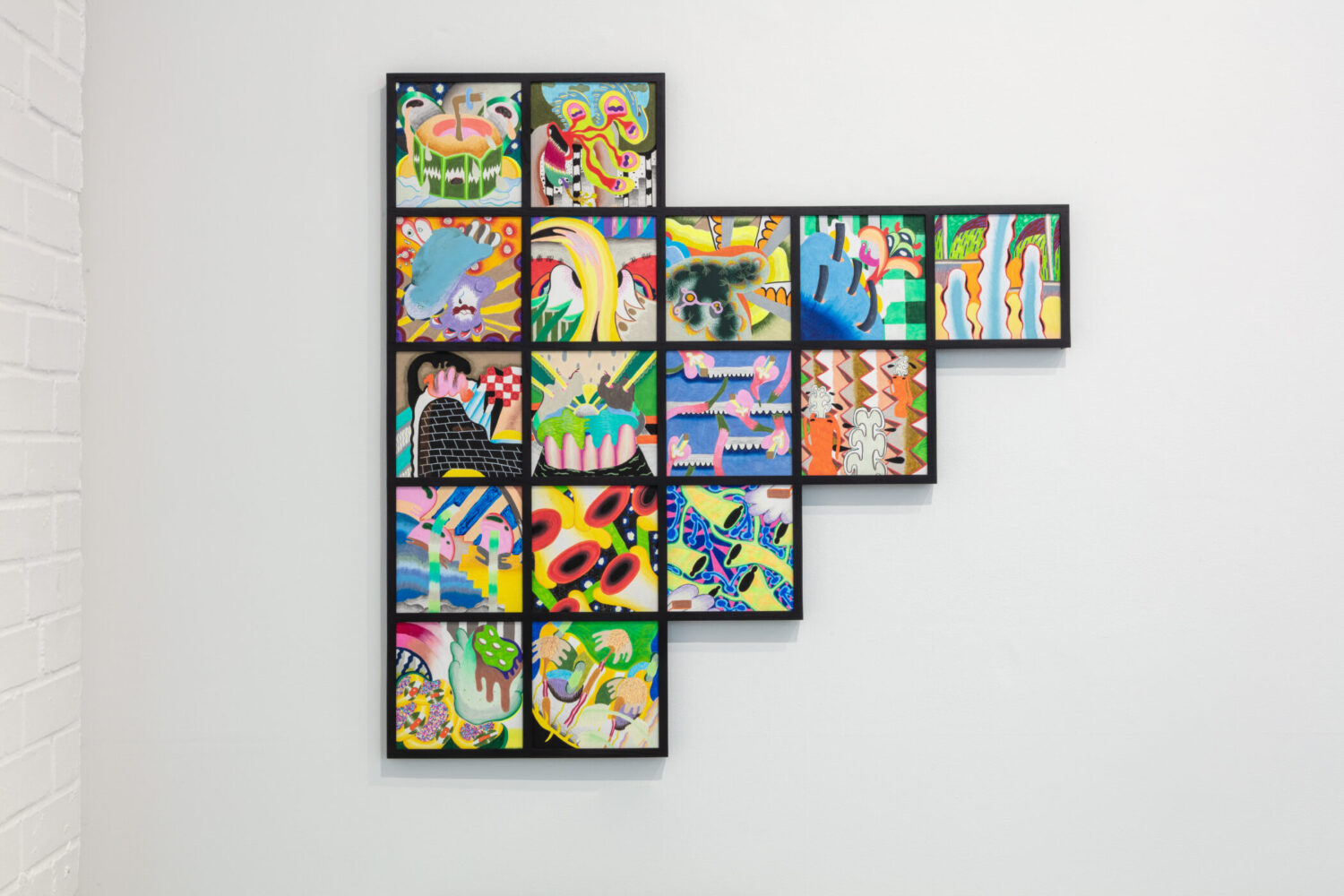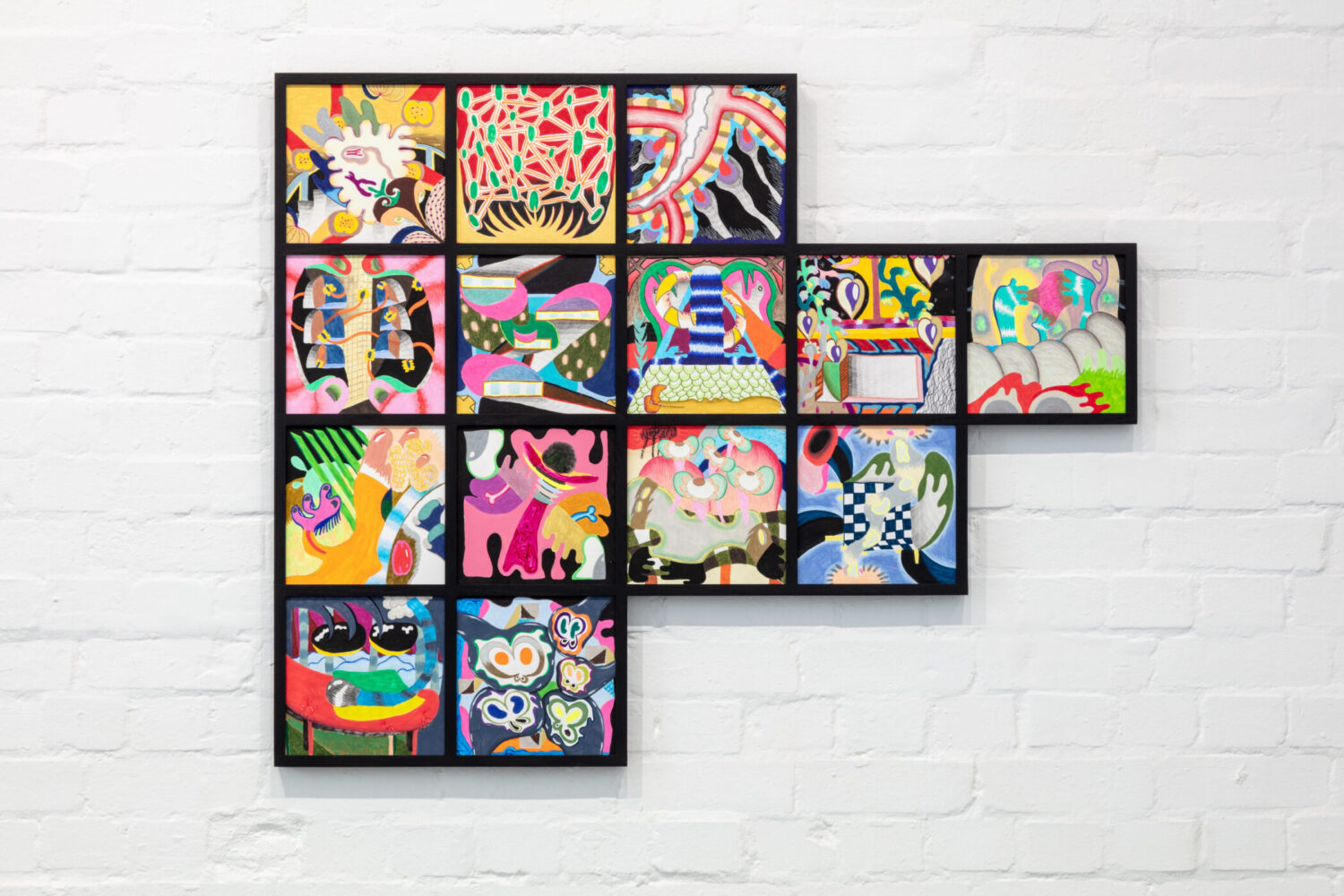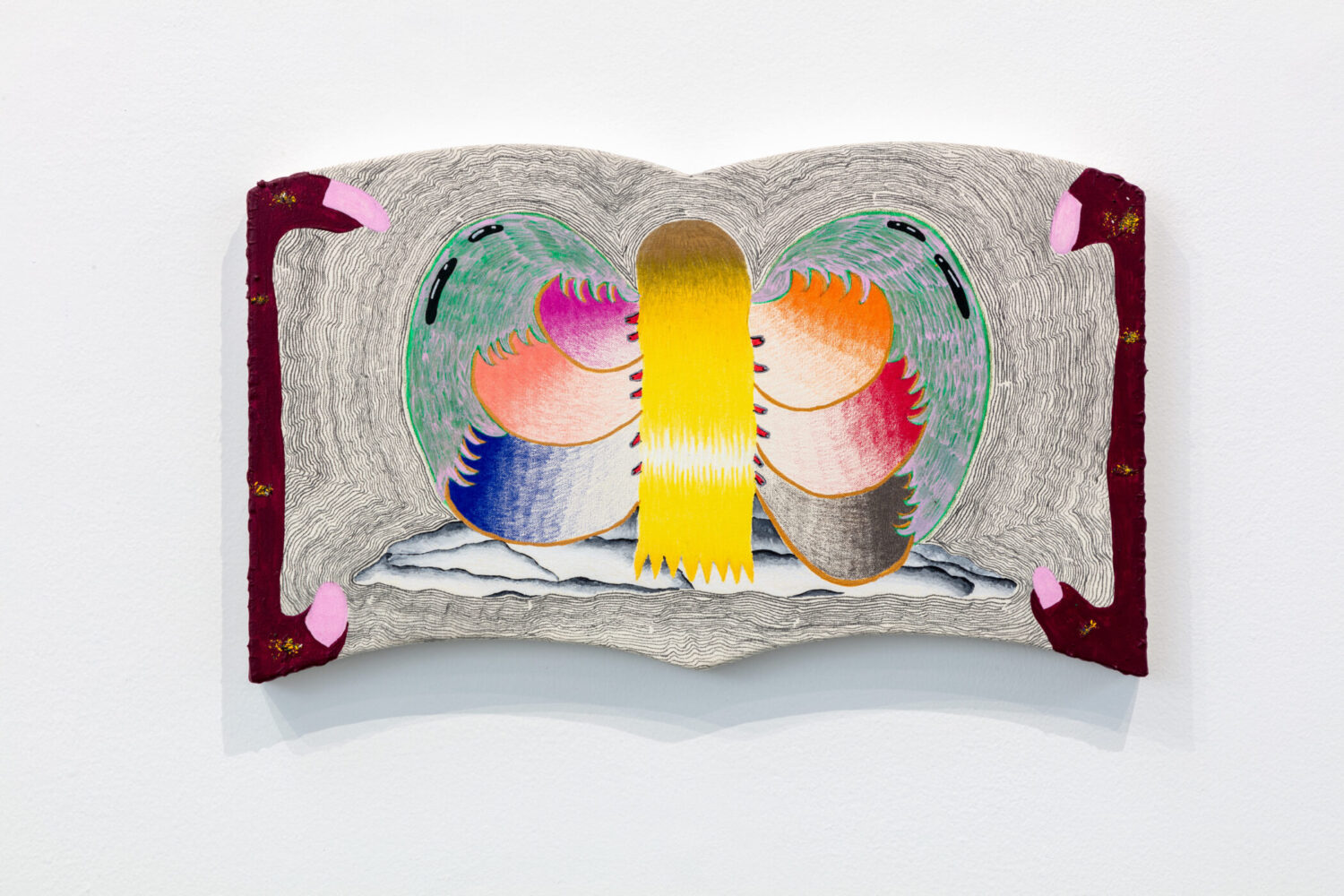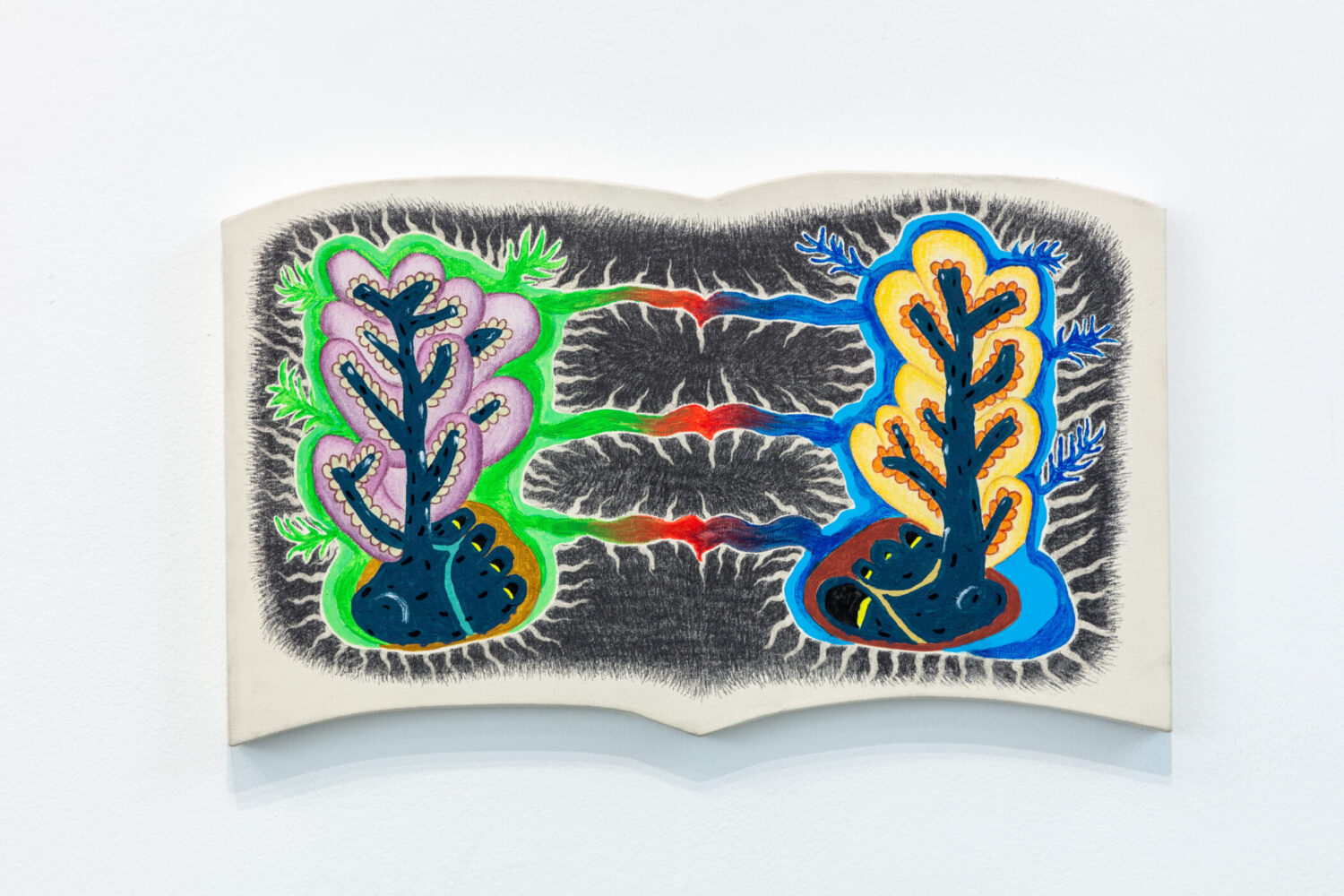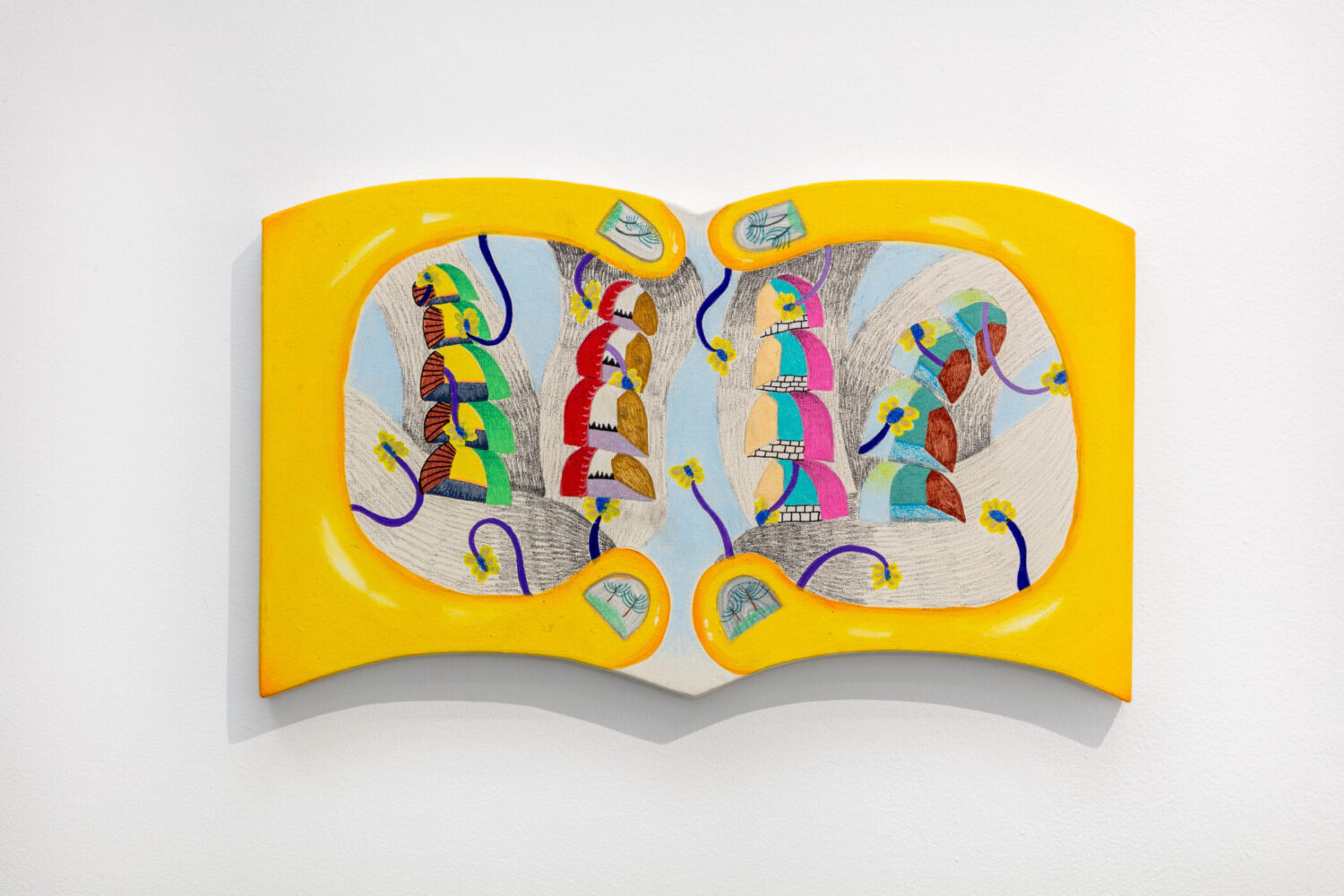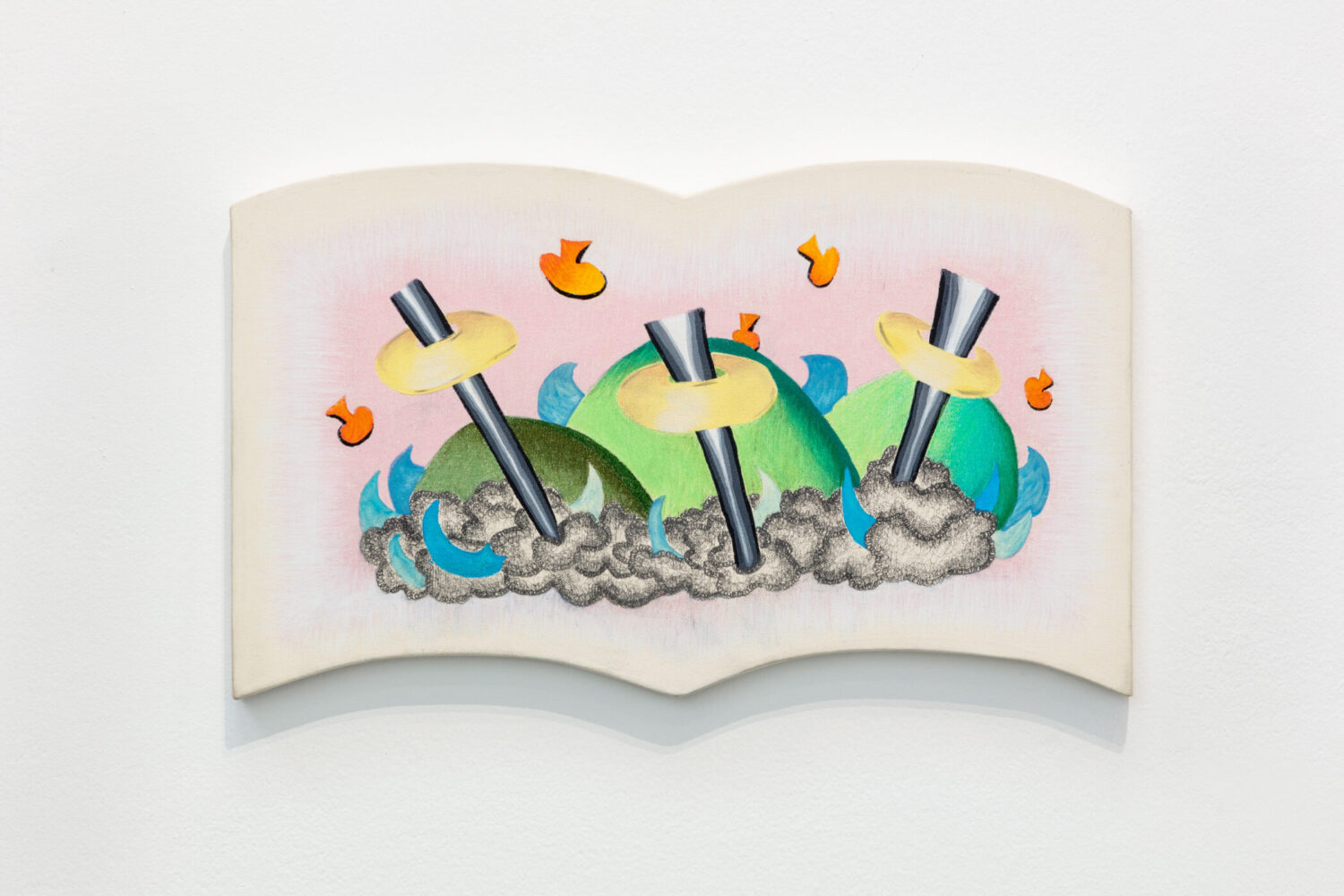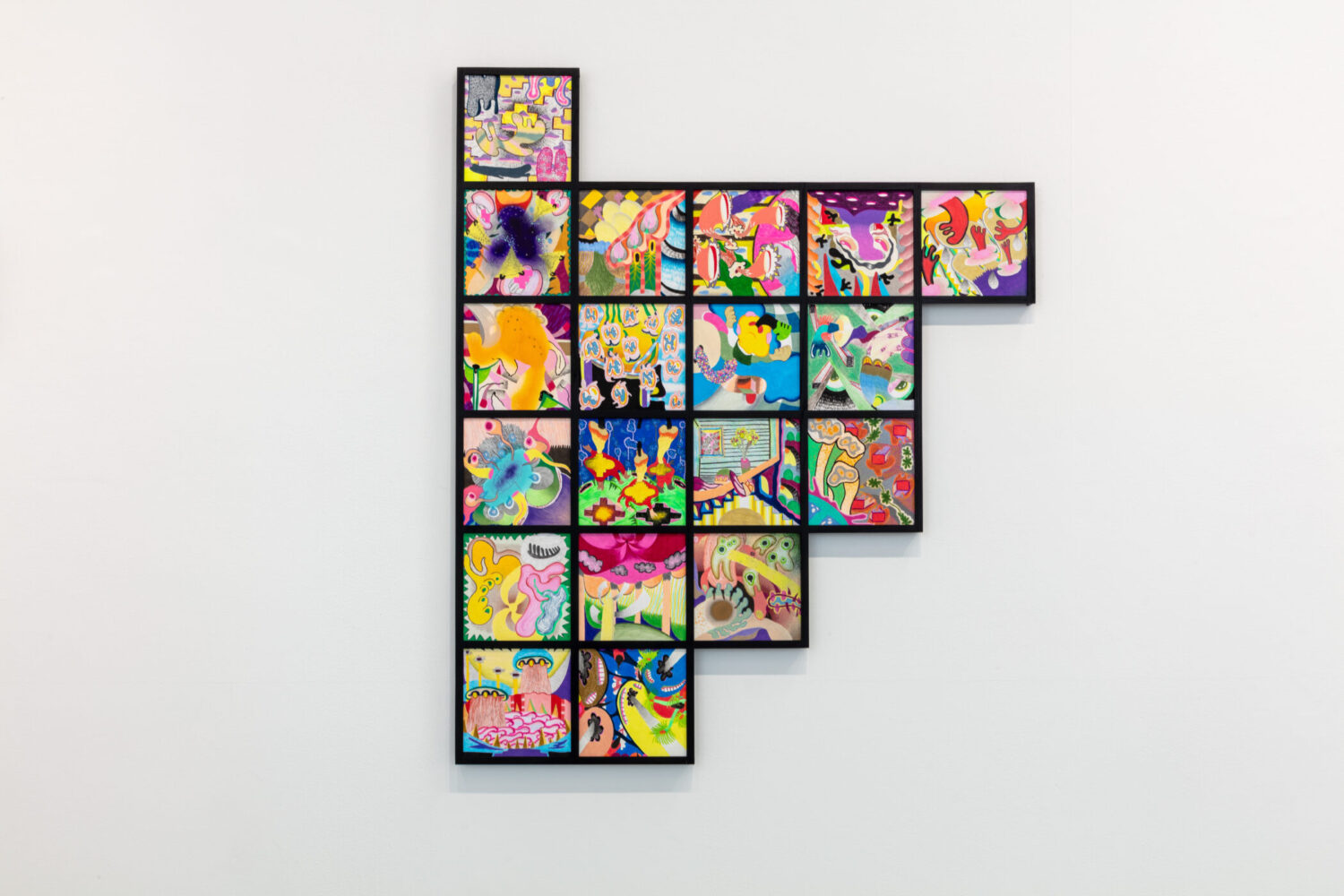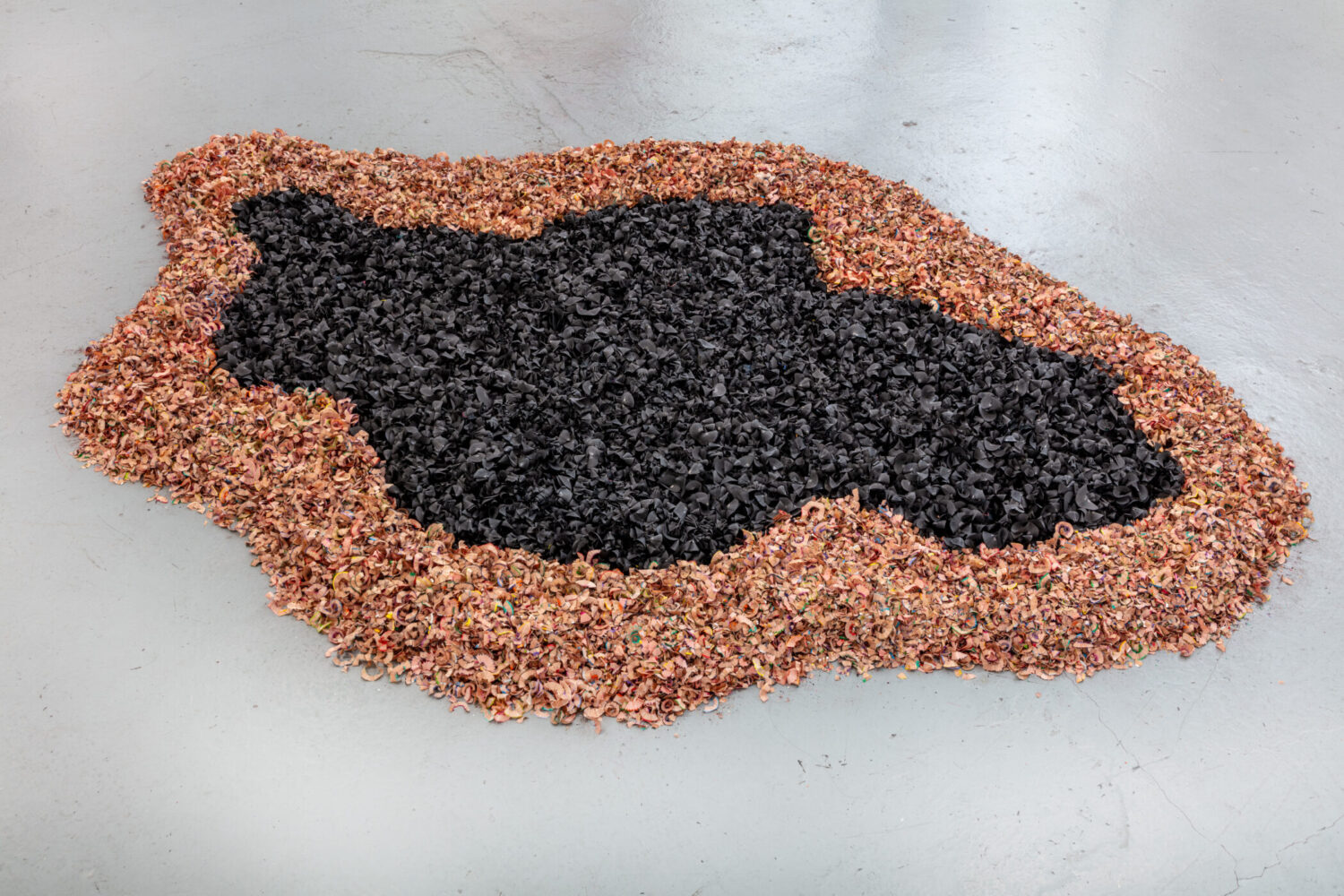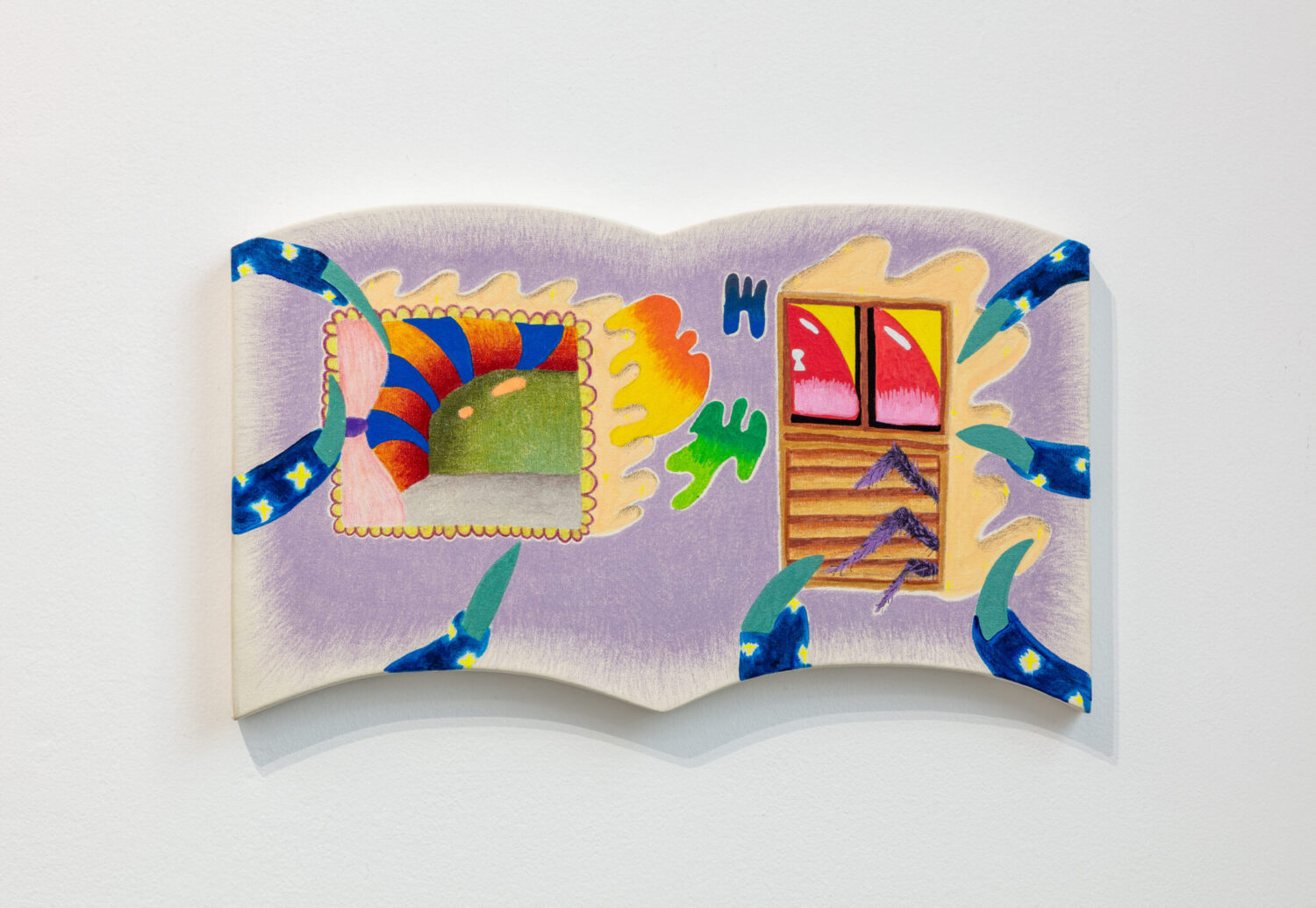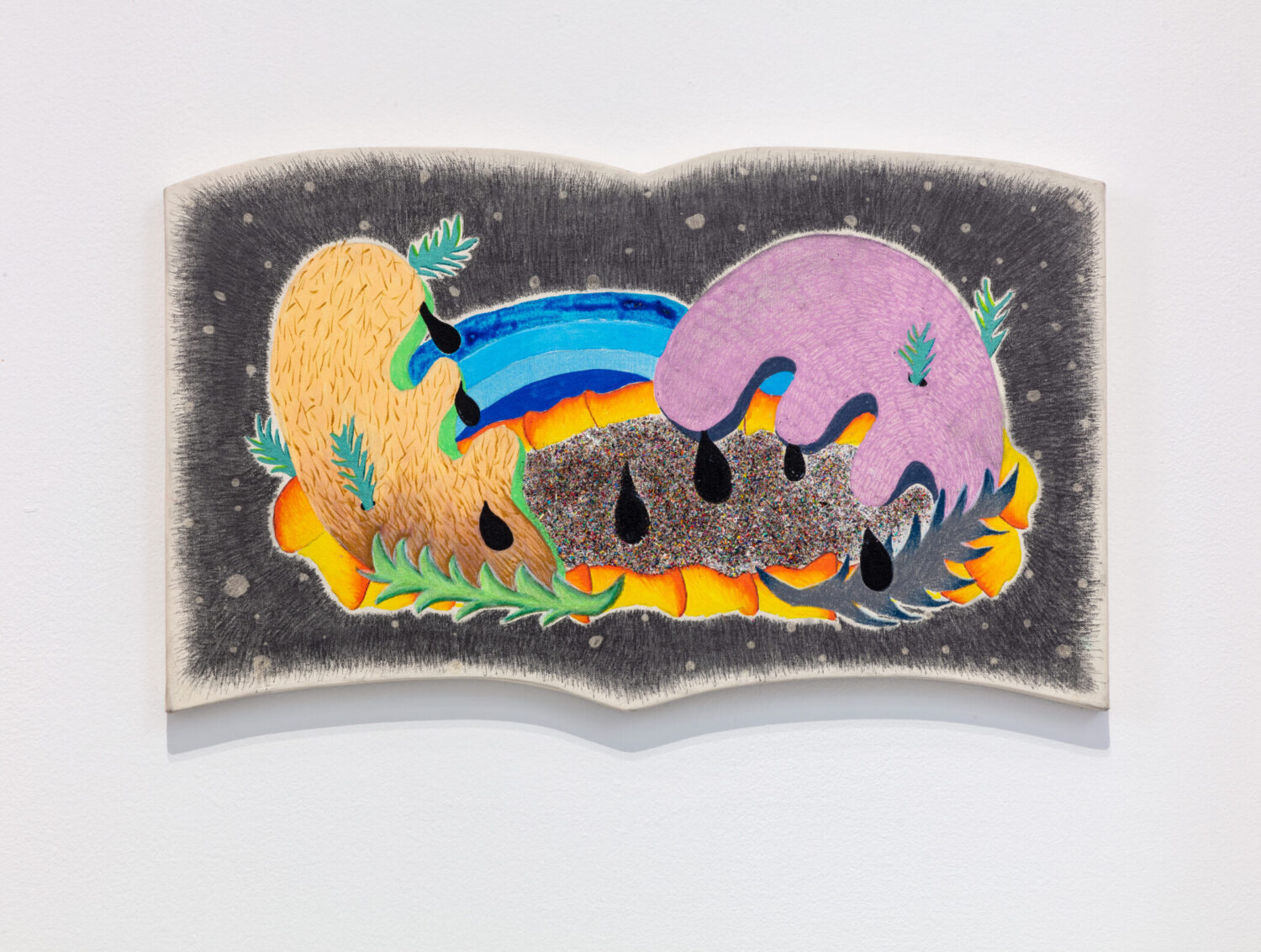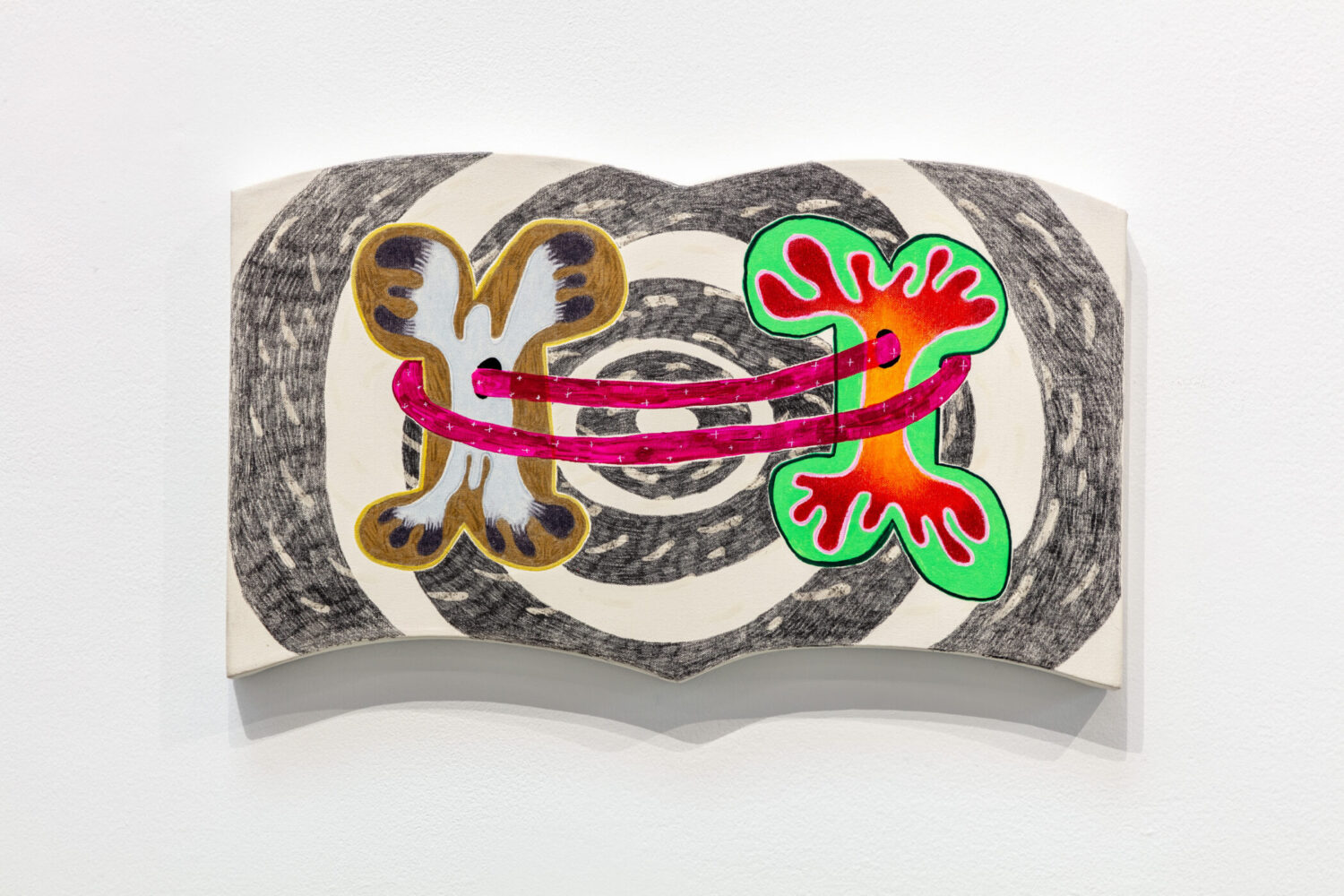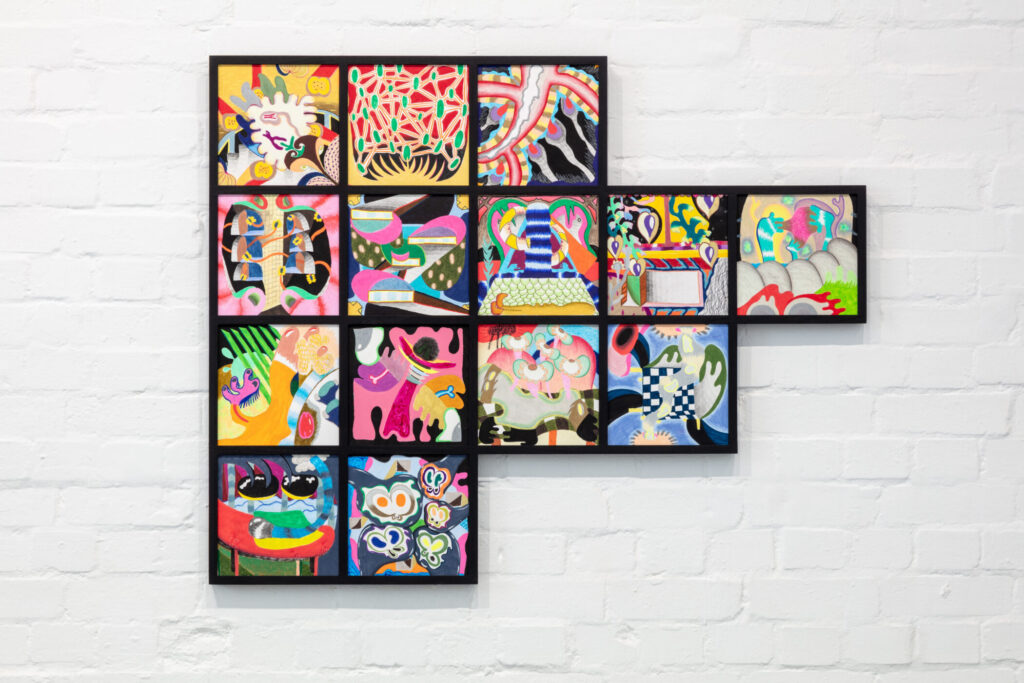The works in the exhibition are primarily drawings, often made directly on canvas or paper. They are reminiscent of crossword puzzles, boxes, or visual riddles—dense with colour, composite forms, and symbolic imagery. Despite their resemblance to encryption, they lack a fixed key; instead, they invite viewers into a sensory experience, allowing shapes and vibrations to guide their interpretation. Recurring symbols suggest that bodies have been transformed into a visual lexicon, or that fragments are pieced together like puzzles. Organic motifs such as flowers and leaves appear throughout.
Barbalho’s vision echoes the artisanal traditions of Northeast Brazil and Indigenous approaches to language, making, and non-linear creation. Hailing from Rio Grande do Norte—a region marked by cotton production, craft, and the legacy of Black communities—he draws inspiration from the practice of transforming discarded fabric scraps into vibrant tapestries. This ethos of turning the humble into the meaningful resonates with his use of simple, accessible materials—paper, pencil, pen—to craft works of intricate resonance.
Chants is shaped by the intense natural environment of his birthplace and current home. The harsh sun of Northeast Brazil influences perception, while his time in the Atlantic Forest leads him to draw from nature’s forms and rhythms, searching for “logos” (logic, pattern) within “physis” (nature, reality)—concepts rooted in ancient Greek philosophy. Barbalho’s exploration of reality extends beyond the forest and into the realm of contemporary mass culture, where he draws on everyday symbols—food packaging mascots, animated characters, and visual detritus from a saturated world. His work transforms these elements, often dismissed as trivial, into sacred icons, creating a hyper-contemporary fantastical realm that plays with boundaries and translation.
Interwoven with these cultural motifs are Barbalho’s spiritual and philosophical influences. Drawing on practices of concentration, isolation, and immersion in nature, his work resonates with the meditative focus of Indigenous rituals, particularly ícaros—ritual songs used by Amazonian shamans to evoke the invisible. Similarly, Chants captures the unseen and translates it into visible form. The repetitive act of drawing itself becomes a meditative practice, inducing altered states of consciousness.
The title Chants evokes a visual song, a refrain, or a prayer. Presented like small poems on a wall, Barbalho’s works act as post-writing gestures—traces of the poetic, even in the absence of words. Their repetitive colours and shapes function like musical refrains, offering meditative pauses in this fragmented, fast-paced world.
A standout feature of the exhibition is the small canvases presented like open books. This format challenges the contemporary art trend of monumental scale. By focusing on the small, Barbalho highlights the wonder and complexity found in nature’s minutiae, creating a sense of intimacy and inviting close observation. The format also draws attention to the form of a book to reflect on the value we place on scale and significance.
Another notable aspect of Chants is the incorporation of the hand—a symbol of creation, gesture, and communication. Barbalho integrates fingers into the walls of the exhibition, as if a hand is entering or holding the pages of a book. The hand is connected to the act of drawing, and more broadly, to the manuality of writing and creation. It is a gesture that speaks to the creative, demiurgic process of shaping worlds, and it is this very gesture that embodies the act of making meaning—weaving ideas and forms into something tangible.
At the heart of Barbalho’s work is an exploration of language and translation. He sees the artist as a translator, moving between nature, popular culture, reading, and craft. With their puzzle-like structures, his Chants embody this fluid transition, experimenting with non- linear, multidimensional communication—challenging the conventional notion of a simple message.
In an era overwhelmed by visual and informational noise, Barbalho’s works attempt to arrange these disparate elements aesthetically, functioning as altars to the possibility of meaning amid fragmentation. They invite viewers to engage in prolonged observation, resisting the immediacy of contemporary visual consumption.
Chants reflects the ongoing dialogue between Barbalho’s background in writing and visual practice. His work translates the patterns and vibrations found in writing into drawing, navigating the limits of language and the trace of the writing gesture in a world moving beyond words. Chants is a deeply layered exhibition that positions drawing as an ancient technology, turns mass culture symbols into sacred icons, and invites us to find meaning in a fragmented, noisy world. It is an invitation to look closely, slow down, and explore the myriad ways in which meaning can be constructed and communicated in our contemporary reality.
Exhibition text by Dr Jamille Pinheiro Dias.
Exhibition organised by Maria do Carmo M. P. de Pontes.
This exhibition will run from 16th May to 19th July 2025, Wednesday to Saturday, 12-6 pm or by appointment.
